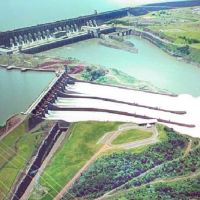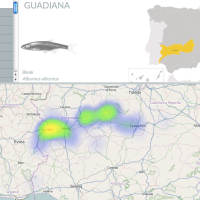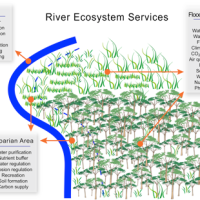Promises and pitfalls of the EU Nature Restoration Law

Last month, the ambitious EU Nature Restoration Law moved a step closed to adoption following a provisional agreement between policy makers. Originally proposed in June 2022, the law obligates European countries to restore at least 20% of their land and seas by 2030, and all ecosystems in need of restoration by 2050.
Earlier this month, researchers from four major EU environmental restoration projects published an article in Science assessing the promises and pitfalls of the proposed law, which is expected to be approved in a final vote early in 2024.
It is widely acknowledged that the magnitude of the biodiversity crisis and climate emergency requires rapid and ambitious attempts to conserve and restore Europe’s ecosystems. Research is increasingly showing how such measures aren’t only good for nature, but for people too: as healthy, resilient ecosystems bring significant benefits to our everyday lives in society.
Writing in Science, the authors of the new paper highlight that the Nature Restoration Law acknowledges the failure of existing EU policy and legislation to halt biodiversity losses, and the pressing need for new policies which can help Europe meet the targets of international environmental agreements.
The authors outline that the promise of the Nature Restoration Law meeting its aims will be strongly shaped by how it coheres with existing European legislation and policies. This ‘policy coherence’ includes supporting the goals of existing environmental policies – such as the Habitats Directive and Water Framework Directive – and better integrating environmental concerns into other policy areas.
One key attribute of the Nature Restoration Law is its ambitious targets, timelines and implementation steps towards 2030, 2040 and 2050. However, the authors of the new paper highlight that the success of the law hinges on prompt action, and the rapid deployment of effective management measures to allow nature to recover.
“The NRL avoids several pitfalls that often obstruct the implementation of European policies and regulations, showing that the Commission learned from past experiences,” said lead author Daniel Hering from the MERLIN project. “The regulation sets ambitious targets and timelines, and implementation steps are clearly laid out. It also saves time as it does not need to be transposed into national law.”
As Prof. Hering cites, the Nature Restoration Law is designed to be quickly adopted by European countries. One key strategy for this adoption is through National Restoration Plans, which obligate member states to prepare restoration plans to achieve the targets laid down in the law.
The authors highlight the vast potential of the Nature Restoration Law to boost the implementation of existing European environmental directives and policies. They state that the law is “broad but targets specific ecosystem types with tailor-made approaches… [which] may therefore have impacts beyond the targeted ecosystem.” For example, the restoration of agricultural land can benefit rivers and lakes. In other words, the large-scale restoration of European ecosystems could spark a domino effect of nature recovery across different landscapes.
Accordingly, the authors suggest that whilst the Nature Restoration Law may appear ‘conservative’ in its focus on the protection and restoration of habitats – rather than more contemporary holistic and adaptive approaches – it holds considerable potential to catalyse such large-scale nature recovery. Moreover, the authors state that whilst contemporary ecosystem-based approaches and nature-based solutions are only briefly mentioned in the law, it holds significant capacity to help support the widespread social benefits they can catalyse through restoration.
The authors suggest that the lofty ambition of the Nature Restoration Law and the clear targets and timelines towards achieving its goals it contains offer explanations for its slow and contested path towards adoption. Lobby groups – particularly from agricultural organisations – have argued for its provisions to be watered-down throughout the process.
Implementing the Nature Restoration Law across agricultural landscapes is thus a key challenge to overcome. “Intensive agriculture is still a key driver for biodiversity loss in Europe”, said co-author Guy Pe’er from the Helmholtz Center for Environmental Research (UFZ). “But targets for agriculture and nature restoration could be coordinated, with opportunities for both.”
More broadly, the authors identify that a recurring problem with the implementation of European environmental policies is that gap between targets and effective implementation options. They highlight that the Nature Restoration Law must be implemented by European countries following strict procedures and resilient funding structures in order to give it the best chance of success.
However, there is significant work for European countries to do on bringing groups of land and water owners, managers and funders together to achieve these goals together. “While targets are precisely defined and binding, the steps to achieve them need to be decided by individual European countries and most of them are voluntary” said co-author Josef Settele from the Helmholtz Center for Environmental Research (UFZ).
The authors conclude that the ambition and rapid timescale of the Nature Restoration Law is to be welcomed, but its success will hinge on how well it is translated into action. This process requires strong policy, which supports existing European legislation, and stable long-term funding streams to allow for the gradual recovery of nature across the continent.
They write: “Given the urgency of global crises, Europe cannot afford to delay; the opportunity to install and implement an ambitious law, and the opportunity to show global leadership, should not be missed.”
///
The authorship of the paper includes the coordinators of the projects MERLIN, WaterLANDS, SUPERB and REST-COAST that are all funded by the European Commission’s Horizon 2020 programme under the topic “Restoring biodiversity and ecosystem services” (LC-GD-7-1-2020).
This article is supported by the MERLIN project.
















Comments are closed.